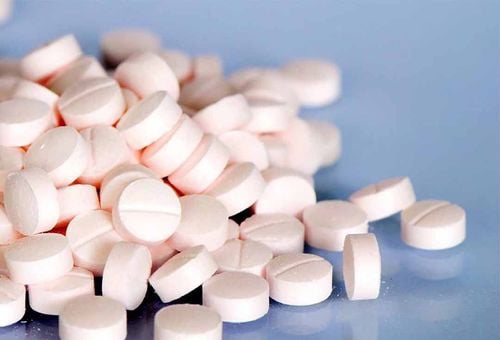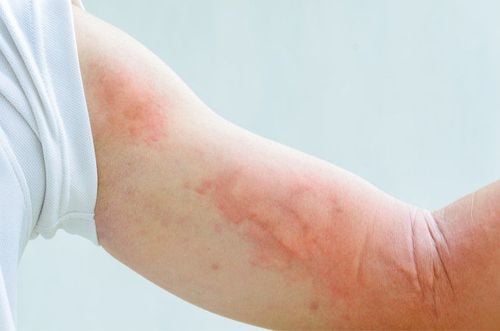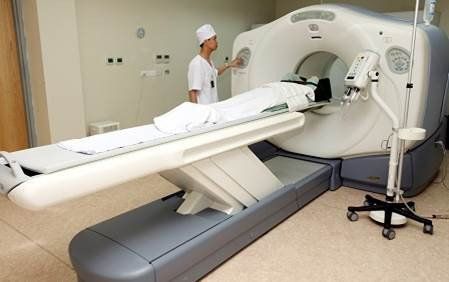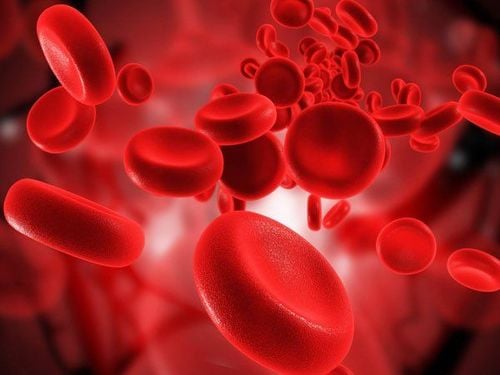This is an automatically translated article.
Pentostatin belongs to the group of Adenosine Deaminase Inhibitors. Medicines are often used to treat cancers of a certain type of white blood cell. The drug works by slowing or stopping the growth of cancer cells in the body.1. What is Pentostatin?
Generic or active ingredient name: Pentostatin. Type of drug: Adenosine Deaminase (ADA) Inhibitor. Drug form and strength. Powder for solution for injection 10 mg. Powder for solution for infusion 10 mg. Pentostatin is an anti-metabolic, purine analog. Pentostatin inhibits the activity of the enzyme adenosine deaminase, which interferes with the cell's ability to make and copy DNA. DNA is important for cell division and growth. Because cancer cells divide more often than healthy cells, drugs that target DNA-related processes are more toxic to cancer cells than healthy cells.
2. What are the effects of Pentostatin?
Pentostatin is effective in the treatment of hairy cell leukemia that has not and has not responded to Alpha-interferon; ongoing disease accompanied by clinical symptoms such as thrombocytopenia, leukopenia, anemia and other related symptoms.
3. Usage and dosage of Pentostatin
Pentostatin is given intravenously. Dosage and length of treatment are determined by the size and type of cancer for each individual person.
Therapeutic dose in adults:
The recommended therapeutic dose of Pentostatin for the treatment of hairy cell leukemia is 4 mg/m2 in a dose administered every other week. Pentostatin can be given intravenously by diluting to a larger volume and injecting it over 20 to 30 minutes. The optimal duration of treatment has not been determined. In the absence of severe toxicity and ongoing improvement in efficacy, you should be treated until a complete response is achieved. The use of two additional therapeutic doses has been recommended after a complete response has been achieved. All persons taking Pentostatin for a period of 6 months should be evaluated for effectiveness and response to treatment. If you do not achieve a complete or partial response, your doctor will advise you to stop treatment with Pentostatin. Dosage in children:
Hairy cell leukemia is a disease that affects adults. The safety and effectiveness of the use of pentostatin in children have not been established.
4. Undesirable effects of the drug Pentostatin
Here are some side effects when using Pentostatin medicine:
Nausea or vomiting a lot: When using cancer drugs, you may experience nausea or vomiting a lot. Leukopenia or neutropenia: Pentostatin can cause life-threatening infections, with or without lowering the white blood cell count. You need to pay attention to monitor your body temperature, high body temperature over 38 degrees accompanied by sore throat or cold, shortness of breath, cough, burning when urinating. These symptoms could be signs of an infection. Skin rash: Pentostatin can cause a skin rash that gets worse with continued use. Low red blood cell count or anemia: When your red blood cell count is low, you may feel tired or weak. In many cases, users also experience shortness of breath, shortness of breath or chest pain. If the red blood cell count is too low, the doctor may order a blood transfusion. Low platelet count (decreased platelet count): Signs of thrombocytopenia, such as excessive bruising or bleeding, include nosebleeds, bleeding gums, or blood in the urine, and your stool. If the platelet count becomes too low, your doctor may order a platelet transfusion. Less common side effects:
Hepatotoxicity: Pentostatin may cause hepatotoxicity. Your doctor will monitor your liver function through blood tests. Kidney problems: Pentostatin may cause decreased urine output, blood in the urine, swollen ankles, or loss of appetite. Lower blood pressure: Pentostatin can cause low blood pressure. Symptoms of hypotension may include fatigue, lightheadedness, dizziness, nausea, and blurred vision. Pulmonary edema: Pentostatin can cause excess fluid to build up in your lungs, making you feel more short of breath. If you have trouble breathing, immediately go to medical facilities for timely treatment.
5. Pentostatin drug interactions
Pentostatin drug interactions with other drugs:
Allopurinol and Pentostatin drugs have both been associated with skin rashes. Pentostatin potentiates the action of Vidarabine, a purine nucleoside with antiviral activity. The combined use of Vidarabine and Pentostatin may increase the adverse reactions associated with each drug. The combined use of Pentostatin and Fludarabine phosphate is not recommended because it may increase the risk of life-threatening pulmonary toxicity. Drug interactions can change the drug's ability to work or increase side effects. To avoid possible adverse interactions, you should make a list of all the medications you are taking, including prescription, non-prescription and dietary supplements, to your doctor.
6. Effect of Pentostatin on fertility
Exposure to Pentostatin to an unborn baby can cause birth defects, so you should not become pregnant or father a child while using this medicine. Use of safe contraception is essential during treatment. For women who are breastfeeding: It is necessary to strictly follow the instructions of the treating doctor.
7. Some notes when using Pentostatin drug
General note when treating with Pentostatin drug:
People with hairy cell leukemia may experience major bone marrow failure during the first few courses of treatment. People who have had an infection before treatment with Pentostatin medicine can lead to death. A person with an infection should only use the drug when the doctor has weighed the benefits of treatment outweigh the possible risks. In individuals with advanced hairy cell leukemia, initial courses of pentostatin therapy have been associated with exacerbation of neutropenia. If severe leukopenia continues beyond the initial cycles, the doctor will evaluate the condition, including examining the bone marrow. Pentostatin therapy should be discontinued in patients with neurotoxicity. Before initiating treatment with Pentostatin, the physician will order an assessment of renal function with a serum creatinine test and/or a creatinine clearance test. In addition, bone marrow aspiration and biopsy may be ordered 2 to 3 months apart to assess response to treatment with Pentostatin. Note to the group of pregnant and lactating women:
For pregnant women: Women in the reproductive period who are using Pentostatin should not become pregnant. For lactation: At present, it is not known whether the dose of Pentostatin is excreted in breast milk. Therefore, breastfeeding is not recommended while the mother is using this medicine. Note when driving and operating machines:
Pentostatin drug affects the ability to drive and operate machines. You should exercise caution when driving or operating machinery after treatment with this medicine. Pentostatin is a prescription drug, so make sure you consult your doctor before using it. Hopefully, the article has provided you with useful information about the uses, doses and precautions when using Pentostatin.
Please dial HOTLINE for more information or register for an appointment HERE. Download MyVinmec app to make appointments faster and to manage your bookings easily.













